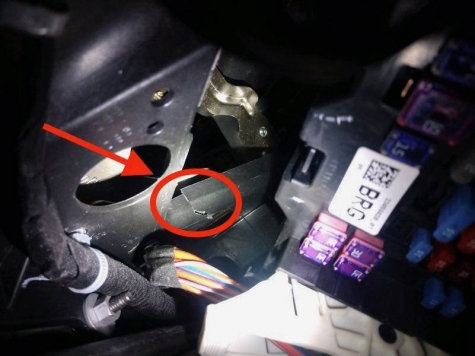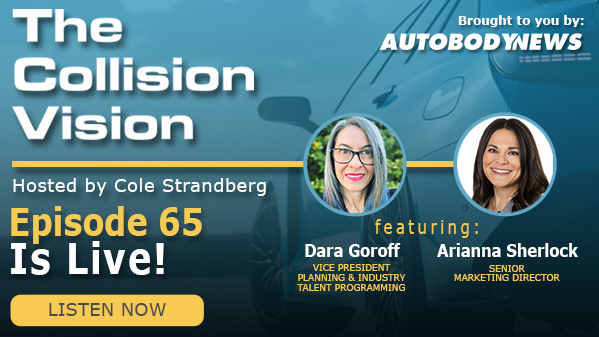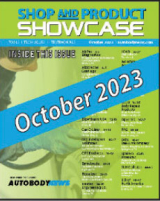Mike Anderson is convinced the vehicle safety inspection procedures called for by automakers in the OEM electronic service manuals as part of collision repair work have become the single biggest friction point in the industry.
“It’s not scanning. It’s not ‘feather, prime and block.' It’s these safety inspections,” said training and consultant Anderson, of Collision Advice. “My heart bleeds for shops. There are some out there really trying to do the right thing. But they’re getting stuck in the middle.”
Anderson said virtually all of the automaker collision repair procedures he’s reviewed include a variety of safety inspections a shop needs to do on vehicles involved in a collision. These inspections can include checking seat belts, measuring the steering column, checking supplemental restraint system connectors, looking for damage to knee bolsters or seat components and other procedures just to gain the access needed to perform inspections.
“These inspections will vary by OEM and by the year and model of the vehicle,” Anderson said. “Some inspections are required only if an airbag deploys, but there often are inspections required even when airbags don’t deploy.”
Subaru, for example, is among the automakers that call for safety inspections following any collision repair of its vehicles. Speaking at an industry event in late 2019, Nicole Riedel of Subaru of America reiterated the automaker’s stance.
“Every time,” Riedel said of when the inspections are required post-repairs. “Even if you are in New York City and vehicles are just getting sideview mirrors clipped, you still have to do it. We will not deviate from that procedure. We are having conversations with Japan to review that. But at this time, we need you to do it every single time.”
Anderson said Subaru is hardly alone in this. He points to OEM procedures for the 2018 Jeep Cherokee that state, “If a vehicle is involved in a front-end collision, or the airbag has deployed, or both, the steering column must be replaced.”
He shares examples of similar OEM safety inspection procedures called for by Ford, Mercedes-Benz, Toyota, Audi, BMW, Fiat Chrysler and Hyundai. “The OEM procedures for the 2018 Chevrolet Silverado include four or five pages of things a shop is supposed to inspect if a vehicle is any collision,” Anderson said. “A shop owner sent me photos of a Silverado he repaired, and when they removed the dash as part of the required safety inspections, sure enough, they found that the dash carrier was broken.”
That shop owner, Tim Paap of Paap Auto Body in Mattoon, IL, said that damage occurred even in a relatively low-speed---20 mph---accident in which the occupants were wearing seat belts.
“My only conclusion was their lower extremities were propelled forward into the lower dash, which absorbed the impact,” Paap said. “We have found several steering columns collapsed in what would seem like low-speed collisions. This is the reason the required inspections need to be done.”
The broken dash carrier was discovered in a 2018 Silverado with only moderate damage.
Anderson said another shop he works with has measured 43 steering columns in one automaker’s vehicles, as called for in its procedures following collisions. Of those, 11 had collapsed.
“That’s a 26% rate,” Anderson said.
The friction arises because such inspections can potentially require a dozen or more labor hours. Shops doing the procedures can experience push-back from insurers. But there’s also some shops pushing back because the added labor can lead to vehicles being declared total losses.
“I recently got some shops really angry with me at some virtual meetings when I polled them why they weren’t doing the procedures,” Anderson said. “I asked them if it was because they were unaware of the need to do these procedures, if they thought they were smarter than the engineers and don’t think it was necessary, or if they’re just afraid it will create an issue with an insurance company. It was about one-third each.”
Anderson said he’s not going to argue about whether the inspections are necessary or not.
“But I’m certainly not going to second-guess the OEM engineers who say they are,” he said. “Every time we fix a car, we’re playing Russian roulette. If we don’t do these things, is it going to come back to haunt us? We’re playing the odds.
"At the end of the day, if you don’t do it, and somebody gets hurt, you’re liable. You can’t say, ‘The insurer wouldn’t pay me.’ An insurance company refusing to pay you to do it does not remove you from the liability.”
That said, Anderson also thinks insurance companies need to recognize the tough position they are putting shops in when they refuse to pay for necessary inspections.
“It’s not fair, and it’s not right, for the shop or the consumer,” he said. “Insurers need to step up and be part of the solution to this issue, not add to it.”
Anderson said his goal in challenging shops on the safety inspections isn’t to make anyone angry or add to the friction, but to create awareness about the safety inspections---and work toward some resolution to the issue. He’d like to see automakers, shops and insurers come together to find ways to reduce the friction.
He sees a number of things he thinks could help.
First, automakers could refine the safety inspection requirements by better defining when they are needed. Some call for some of the inspections only when there’s been an airbag deployment, which is helpful, Anderson believes.
“But others use such phrases as ‘minor to moderate collision.’ I think we need to get a better definition of what qualifies as a ‘minor to moderate collision,’” Anderson said.
As an example, he points to a definition the National Highway Traffic Safety Administration has developed of a “minor crash” in relation to when child safety seats must be replaced.
Some automakers may be headed in that direction. Last summer, General Motors said it was reviewing its published requirements for inspections it currently says must be completed “after any collision.” Those procedures include inspection of the steering wheel and column, the instrument panel mounting points and brackets, and seat and seat belt mounting points.
“We recognize that the requirements and processes we had laid out…are extremely labor intensive and vehicle invasive,” GM’s John Eck said during an online industry meeting.
One proposal Eck said was under consideration would establish inspection requirements for each of four levels of collision severity, ranging from just visual inspections and diagnostic confirmation without any part removal for the most minor crashes involving no structural damage, up to the existing required procedures as part of repairs involving airbag deployment.
“Once we explain to the engineers the realities of what’s going on in the collision industry and the challenge that repairers are facing, the light bulb goes on and they get it,” Eck said. “So far, everybody has been very understanding of the need to readdress this and see where we can make changes that will help repairers.”
But like Subaru’s Riedel, Eck emphasized that prior to new procedures being finalized, GM’s current post-collision inspection requirements remain in place.
“Until then, nothing has changed,” Eck said.
Anderson said the automakers also could help by providing more of the “why” behind the safety inspection requirements.
“For example, one OEM told me they put a plastic bushing in the steering column that’s made to collapse under inertia forces,” he said about the requirement to measure the steering column. “If so, let’s spell that out so everybody knows why the inspection is critical."
Anderson said a document from Toyota also offers another way automakers could provide more information and justification for the inspections. It shows, for a list of replacement parts, the necessary procedures that must be completed---and lists the possible negative effects if that procedure isn’t done.
“The automaker spells out, ‘If you don’t do x, then y will not work properly,” Anderson said. “This is a very clear statement.”
Some automakers suggest in their documentation if a called-for procedure isn’t done, it should be noted in writing and signed by the insurer and customer as a sort of hold-harmless agreement. One automaker suggests noting inside the vehicle’s owner’s manual, where service and maintenance records are documented, if a procedure wasn’t done.
Anderson said he understands legal reasons for this, but still has some concerns with it as a solution.
“If you don’t do it, and that customer sells that car to somebody else, they certainly didn’t waive their rights to that,” Anderson said. “The hold-harmless would need to indemnify the repairer as long as that vehicle is on the road.”
Anderson said he’s open to hearing from anyone who is interested in working on resolving the issue. He’d also like shops to help him compile data on what they do and do not find when conducting the safety inspections.
“I don’t know the solution, but if we get the right people in the room, including insurance companies and the OEMs, we could come up with some solutions that keep shops from being stuck in the middle,” Anderson said.











John Yoswick